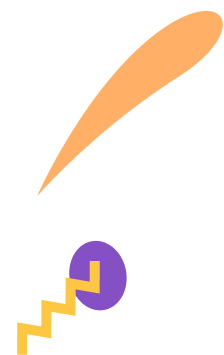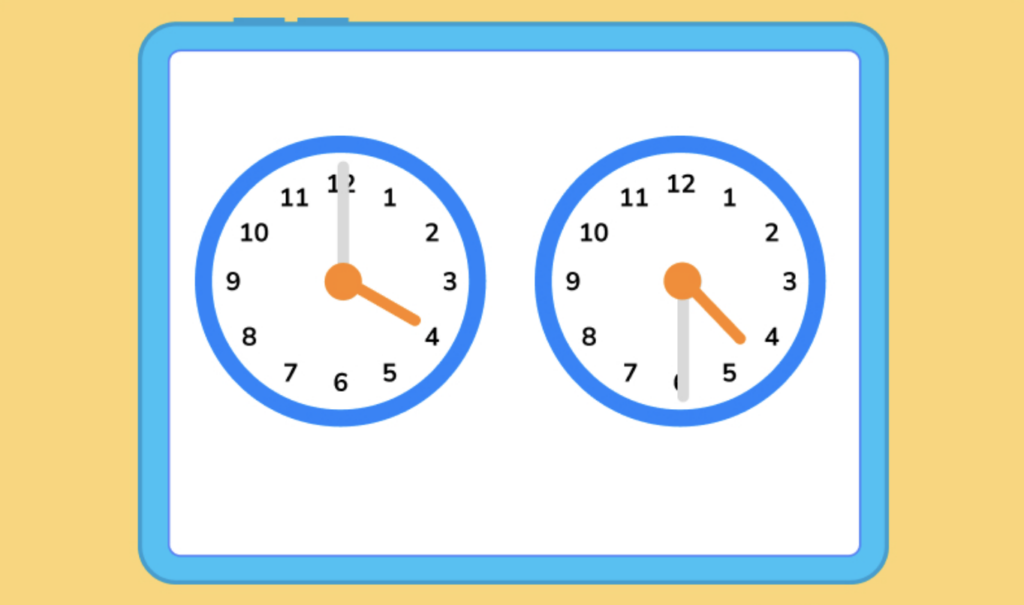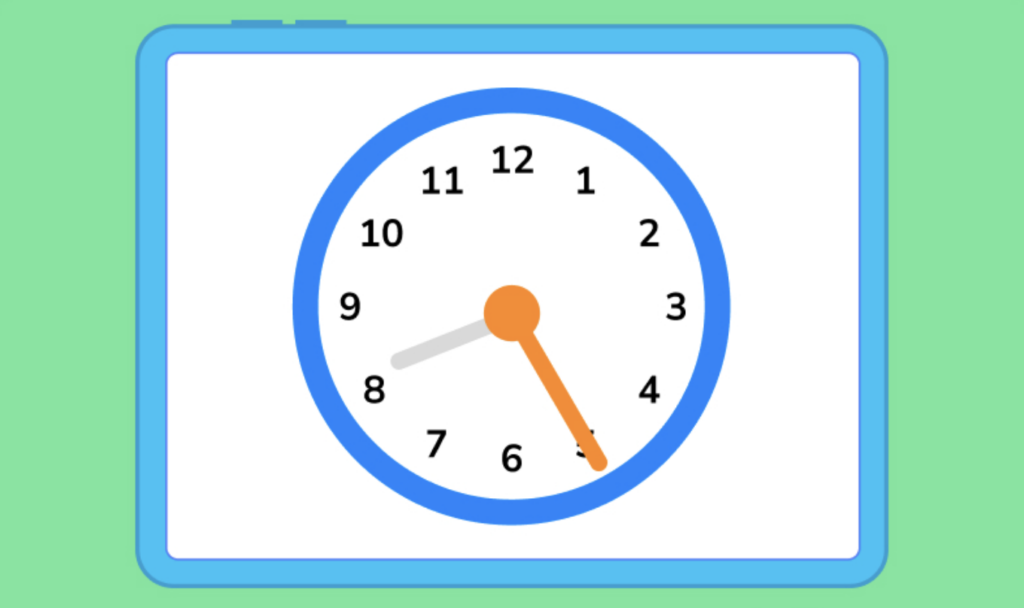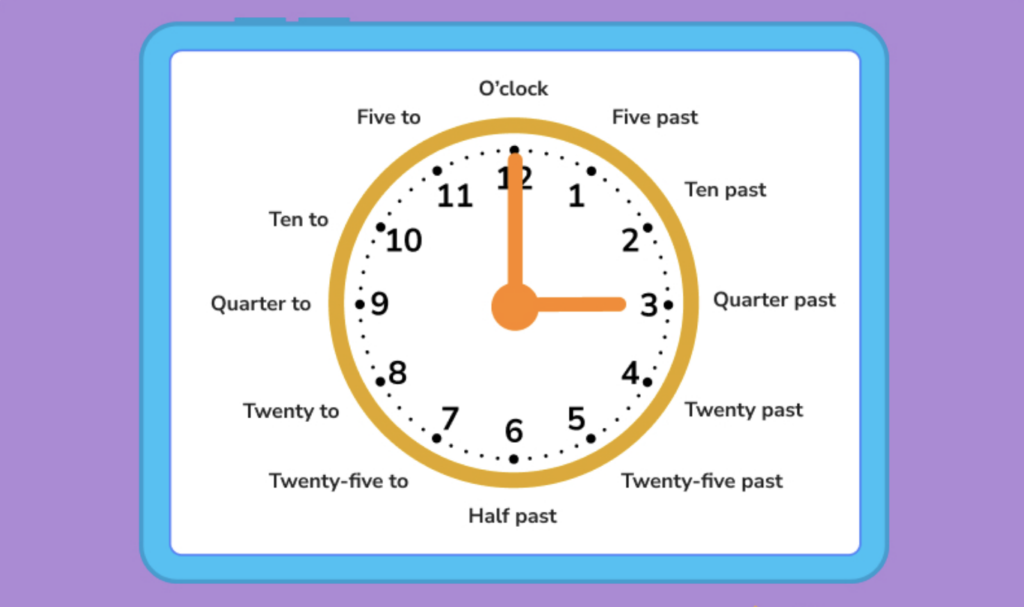

Learn how to tell the time with analogue and digital clocks!

Author
Tess Loucka
Published
September 6, 2023


Learn how to tell the time with analog and digital clocks!

Author
Tess Loucka
Published
September 6, 2023


Learn how to tell the time with analog and digital clocks!

Author
Tess Loucka
Published
September 6, 2023


Key takeaways
Table of contents
Humans have been telling time for more than 5,000 years! Ancient time-keeping structures called sundials were constructed in Ancient Egypt as far back as 3,500 B.C.
Water clocks in ancient Greece, candle clocks from China and hourglasses were other early time-keeping technologies that paved the way for new time-keeping devices like the pendulum clock, the mechanical alarm clock, battery-powered clocks and electric watches.
Today, nearly everyone lives their life on a schedule dictated by time. So, knowing how to read a clock is a basic skill that we all need.
Before we can learn how to tell time on a clock, let’s explore the types of clocks there are first.
When you look at a phone, computer or digital watch, you’ll most likely see a display of four numbers split in half by a colon. The first two numbers dictate the hour. The second two numbers dictate the minutes of the hour.
Digital clocks can use 12-hour time or 24-hour time (military time). If they’re using 12-hour time, they may include the letters AM or PM to signal whether it is the first half of the day or the second half.
Analogue clocks are circular clocks with the numbers 1-12 around the edge. When we learn how to tell time as children, we’re always taught using analogue clocks first.
These clocks use two hands to tell the time. The short hand dictates the hour, and the long hand dictates the minutes of the hour. Sometimes, analog clocks have a third hand to count seconds.
The time is determined by where on the clock face the hands are pointing.
Watches are clocks that can be worn on the body. Watches come in all shapes and sizes and can be used as an accessory and a tool to tell time. Watches can be either digital or analogue.
Get 2 FREE weeks of Doodle!
Use code 2WKS_2026 to enjoy unlimited questions and games
Unlock unlimited maths questions
Put your learning into practice with fun exercises + games that are proven to boost ability!
Get 1 FREE month of Doodle!
Use code MONTH_2026 to enjoy unlimited questions and games
Have a go at some DoodleMaths questions
Select a year group
Being able to read an analogue clock now is just as important as it was 50 years ago!
Why? Because analogue clocks will still be around and ticking when your phone runs out of charge. But how do you read one?
To know how to read an analogue clock, you should first understand what the hands represent. Analogue clocks always have two hands: an hour hand and a minute hand.
The hour hand
Each day is made up of 24 equal parts, called hours. The shorter hand on the clock points to the number that tells us the hour. When the hour hand (aka the short hand) is pointing between two numbers, this means the hour is represented by the previous number.

The minute hand
The minute hand is the long hand. There are 60 minutes in an hour so there are 60 ticks around the edge of the clock face to represent those minutes. The number or tick this hand points at tells us what minute we are in.

Starting at the 12, count the tick marks clockwise (to the right) down to the minute hand to see how many minutes have passed. In between each big number are five ticks, so you can also skip count by 5s. In the image above, the minute hand is pointed at the number 5, so you can multiply 5 by 5 ticks to get 25 minutes.

Meet DoodleMaths, the award-winning maths app that’s proven to double a child’s rate of progression with just 10 minutes of use a day!*
Filled with fun, interactive questions covering the whole curriculum, it creates each child a unique work programme tailored to their needs, boosting their confidence and skills in the subject. Try it for free today!

*Based on earning 24 stars a day in DoodleMaths. Read full study

Besides knowing how to read a clock using numbers, it’s common to use time words to tell time instead. Here’s a list of time words you should know. Use them to convey what time it is quicker!

AM and PM are also important terms to know. AM, which stands for Ante Meridiem, is the time of day between midnight to midday. PM stands for Post Meridiem and is the time between midday to midnight.
Now that we know words we use to tell time, let’s have a go with a few practice problems using DoodleMaths. Earn gold stars for the questions you get right!
When expressing time, we always start by saying the hour followed by the minutes. When telling time, we do the same thing. Start with the short hour hand, then move on to the long minute hand.
Yes, the hour hand is the little hand, sometimes called the short hand.
Military time is time told using a 24-hour system. This avoids the need to distinguish between AM or PM which is helpful since the military operates around the clock.

What do AM and PM stand for?
Learn the difference between AM and PM and how important they are
How to read and use a ruler
Learn how to read different kinds of ruler with our step-by-step guide
Lesson credits

Tess Loucka
Tess Loucka discovered her passion for writing at school and has not stopped writing since. Combined with her love of numbers, she became a maths and English tutor. Since graduating, her goal has been to use her writing to spread knowledge and the joy of learning to readers of all ages.

Tess Loucka
Tess Loucka discovered her passion for writing at school and has not stopped writing since. Combined with her love of numbers, she became a maths and English tutor. Since graduating, her goal has been to use her writing to spread knowledge and the joy of learning to readers of all ages.
Book a chat with our team
If you’d like to use Doodle’s browser version, please visit this page on a desktop.
To log in to Doodle on this device, you can do so through our apps. You can find out how to download them here: